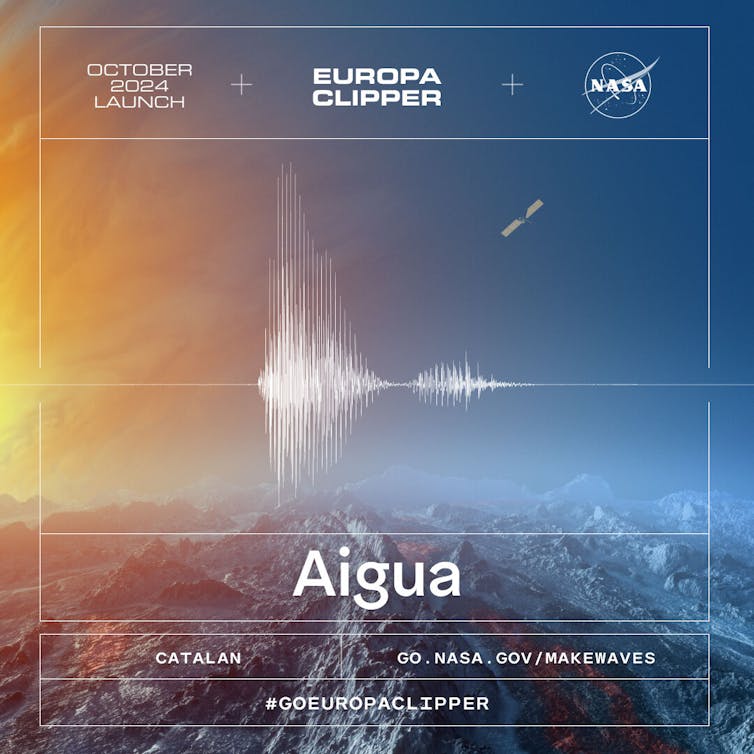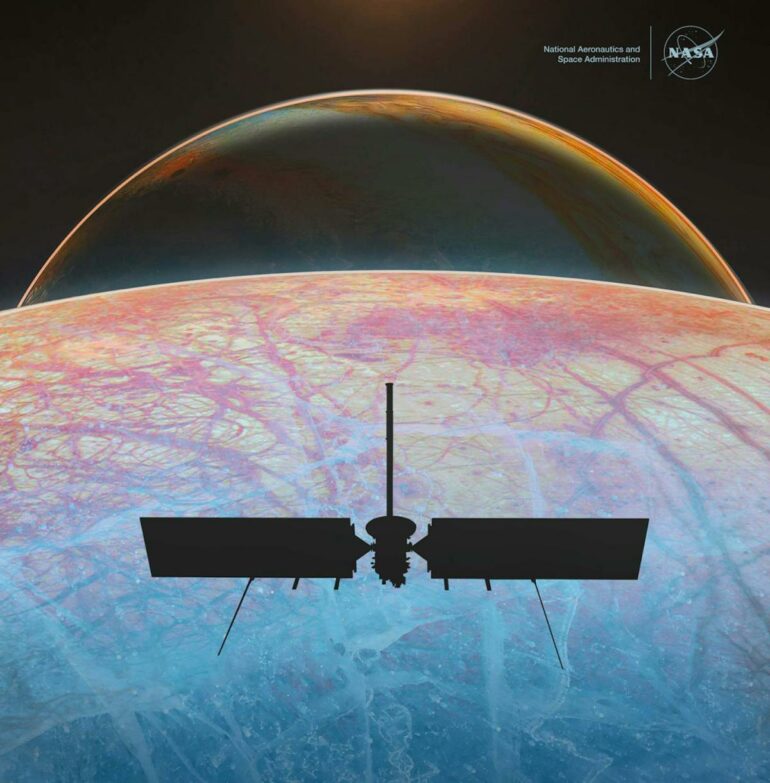NASA’s Europa Clipper spacecraft, headed to Jupiter’s ice-covered moon Europa in October 2024, will carry a laser-etched message that celebrates humanity’s connection to water. The message pays homage to past NASA missions that carried similar messages.
As the president of Messaging Extraterrestrial Intelligence, or METI, International, I helped design the message on Clipper with two fellow members of our board of directors: linguists Sheri Wells-Jensen and Laura Buszard-Welcher. METI International is a scientific organization dedicated to transmitting powerful radio messages to extraterrestrial life.
We collected audio recordings in 103 languages, and we decided how to convert these into waveforms that show these sounds visually. Colleagues from NASA etched these waveforms into the metal plate that shields the spacecraft’s sensitive electronics from Jupiter’s harsh radiation.
I also designed another part of the message that visually depicts the wavelengths of water’s constituents, because water is so important to the search for intelligent life in the universe.
NASA’s design for the Clipper message heading to Jupiter’s moon Europa.
Etching messages into spacecraft isn’t a new practice, and Clipper’s message fits into a decades-old tradition started by astronomer Carl Sagan.
In 1972 and 1973, two Pioneer spacecraft headed to Jupiter and Saturn carrying metal plaques engraved with scientific and pictorial messages. In 1977, two Voyager spacecraft headed to Jupiter, Saturn, Uranus and Nepture bearing gold-plated copper phonograph records. These records contained tutorials in mathematics and chemistry, as well as music, photos and sounds of Earth and greetings in 55 languages.
Water words
As water is essential for life on Earth, searching for its presence elsewhere has been key to many NASA missions. Astronomers suspect that Europa, where Clipper is headed, has an ocean underneath its icy surface, making it a prime candidate for the search for life in the outer solar system.
Part of the Clipper message features the word for water in 103 languages. We started with audio files collected online, but we then needed to analyze those and find an output that could be engraved on a metal plate. I ended up going back to some of the techniques I used in some of my early psycholinguistic research, where I explored how emotions are encoded in speech.
The 103 spoken words we recorded represent a global snapshot of the diversity of Earth’s languages. The outward-facing side of the Clipper plate shows the words as waveforms that track the varying intensity of sound as each word is spoken.

The waveform for the Catalan word for water – ‘aigua’ – is etched on the Clipper plate. It also appears on NASA’s website.
NASA/JPL-Caltech
Each person whom we recorded saying the word “water” for the waveform had…
